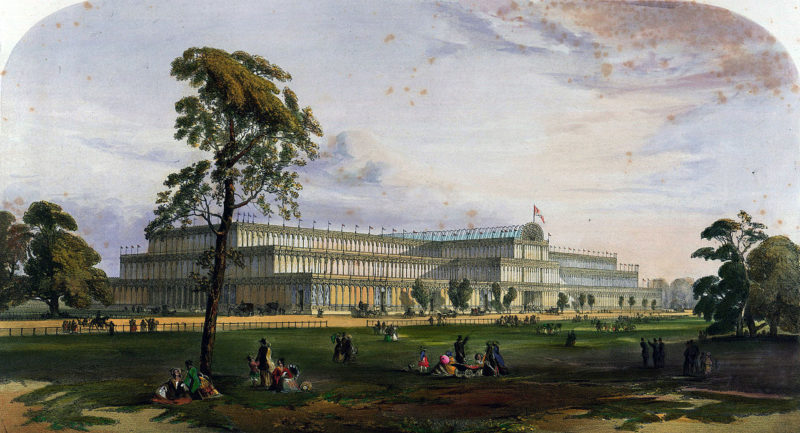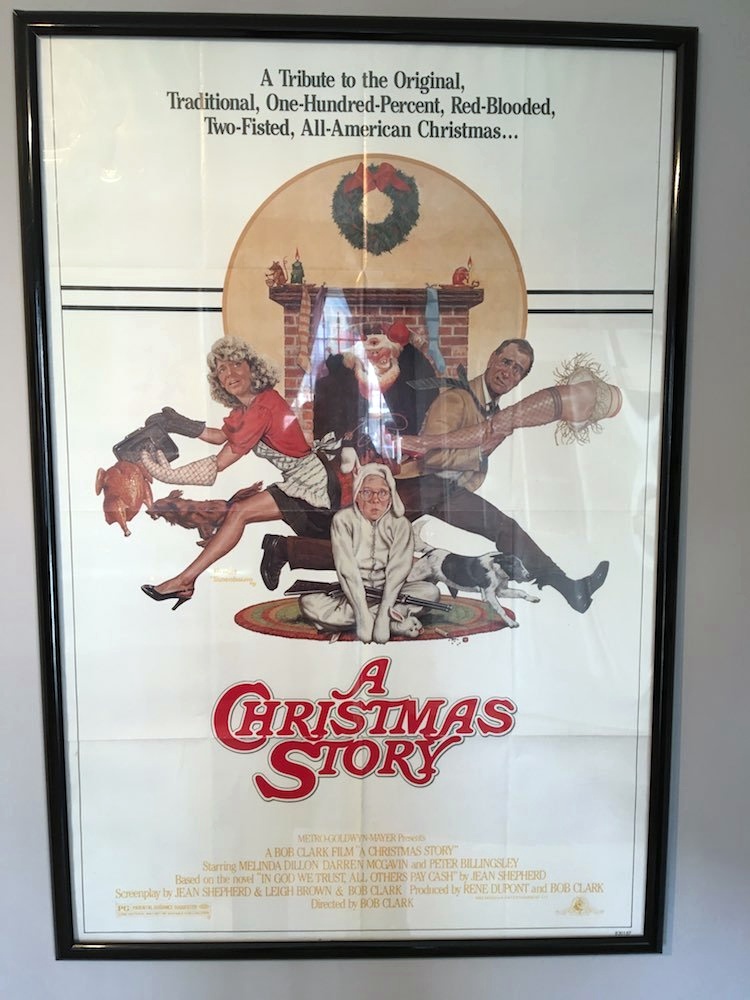A Great Glass House for the Great Exhibition
Oh, to be alive during the mid-1800s. What an exciting time it must have been! The Industrial Revolution was opening up borders and England was the host of what could be considered the first World’s Fair. The Great Exhibition of 1851 showcased cultures and industry from around the world. The first ‘palace’ made of glass was in the spotlight.
The feasibility of plate glass was only realized in 1848 and the Crystal Palace would be the first use of it on this scale. It was built through public subscription so keeping down costs was important. The call for submissions went out mid-March 1850. Of the many designs submitted from around the world, two rose to the top. Unfortunately, all submissions were too costly.
With time running out and a site still to be chosen, the pressure was on to move forward. Renowned gardener Joseph Paxton entered the fray. He had been experimenting with glasshouse construction as part of his work as a gardener. In the end, his design was used and it was completed at Hyde Park at a modest cost!
Paxton was a brilliant designer and problem solver. The building embodied the spirit of British innovation and industrial might. The largest plates of glass available at the time were 10 inches wide by 49 inches long. Paxton used this as his guide in creating the geometric design that could be built in modules. The building was the first to need no indoor lighting during the day. He also solved the problem of draining rain from the roof using angled glass roof panels that channeled rain into U-shaped cast-iron channels. These channels had another use, too! During construction, they served as rails for roofers to use for their trolleys as they glazed the glass.
The building wasn’t without problems, though. A glass house accumulates and retains heat. Coupled with the body heat of thousands of people, it required a creative solution. Paxton didn’t have access to electricity and air-conditioning, so he used external canvas shade-cloths that stretched across the roof ridges. The cloths diffused the harsh sunlight, made it cooler inside, and acted as a primitive air-cooling system. Paxton also incorporated louvers on the outer walls that could be opened and closed using a gear mechanism. The floor boards were spaced about 1 centimeter apart. The louvers and spacing in the floor boards created a passive air-conditioning system. Cooler air was drawn up through the floorboards.
The one issue he could not overcome was the rain and how it would leak through the glazed panes of glass. The putties of the day were not strong enough to keep it out. This did not prevent him from being honored with a knighthood by Queen Victoria, nor did it prevent him from achieving worldwide acclaim.
The Crystal Palace opened on March 1, 1851. The Great Exhibition lasted six months. Something had to be done with the building after is was over. In 1852, the building was taken apart and most of its parts were used in the construction of a new ‘Beaux Arts’ style Crystal Palace on Sydenham Hill. The new building opened in 1854 with a grand ceremony from Queen Victoria. However, by the 1890s, it was deteriorating. The Crystal Palace burned to the ground on November 30, 1936.
So, what was it like to attend the Great Exhibition in the Crystal Palace? How would the Victorian couple of 1851 get to London? What was the proper attire? What did the Queen wear? What innovations of culture and industry were found at the exhibition? We’ll explore that in the next post.
– Donna Klein
Credits
Featured photo: Dickinsons’ comprehensive pictures of the Great Exhibition of 1851
This work is in the public domain in the United States because it was published (or registered with the U.S. Copyright Office) before January 1, 1923.
“Crystal Palace.” Victorian Days. N.p., n.d. Web. 24 May 2016. <http://www.angelpig.net/victorian/crystal_palace.html>.
“The Crystal Palace.” Wikipedia. Wikimedia Foundation, n.d. Web. 24 May 2016. <https://en.wikipedia.org/wiki/The_Crystal_Palace>.












Leave A Comment